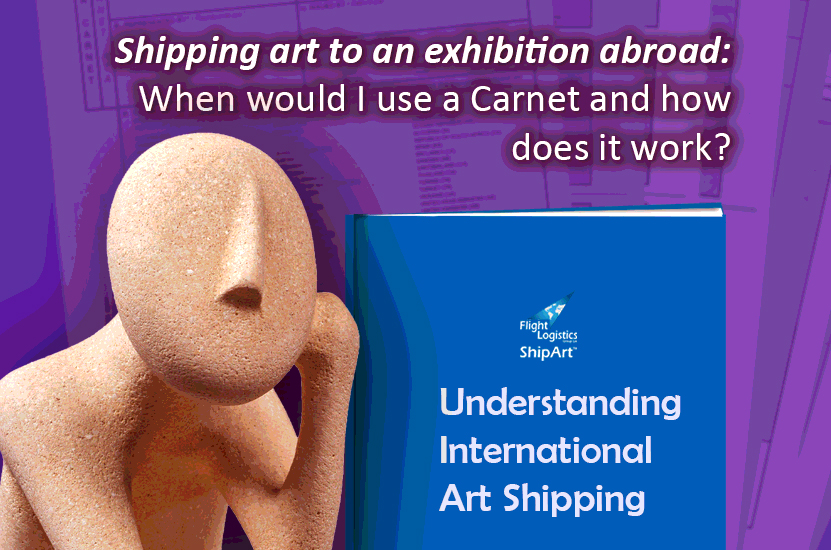Before reading this article, it’s important to understand that different countries have different rules so it’s crucial to seek advice from professionals such as art shipping specialists Flight Logistics-ShipArtTM or a customs broker to ensure that you comply with regulations of both the origin and destination countries. Also be aware that some countries may have specific exemptions as regards (VAT) or import duties for art intended for exhibition.
Carnet
A Carnet (also known as an ATA Carnet) is a common solution for when temporarily exhibiting artwork abroad, particularly when multiple pieces are being shipped, or indeed, an entire exhibition.
It is an international customs document that simplifies the temporary importation and re-exportation of goods. There are extremely strict rules regarding its use, and it can only be used in countries on the ATA System (link below), and when all items being shipped are also being returned (on the same Carnet).
Purchased from a Chamber of Commerce it serves as a customs declaration for temporary importation and includes detailed information about each artwork such as descriptions and values.
Using the ATA Carnet:
- Will mean you’ll not pay customs charges.
- Simplifies clearing your goods through customs in exporting and importing countries — it replaces customs documents that you’d normally need to complete.
- Gives a financial security for customs charges that could be due on goods that you’ll use in the countries you visit.
- Removes the need for a customs declaration – goods that are imported or exported as freight may need to be included on an import and export customs clearance request, form C21.
Things to consider:
- Not all countries accept ATA Carnets. Check which countries are on the ATA System and accept ATA Carnets.
- Ensure that your artworks are adequately insured for the duration of their stay abroad and during the return journey.
- Ensure you use crates that can be opened and then reused at the end of the exhibition – keep all screws and packing!
List of previous ‘Understanding International Art Shipping’ articles:














